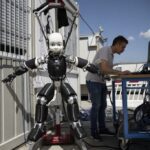
While the economic repercussions of COVID-19, as well as the resulting changes in working habits and supply chain disruptions have impacted every industry, STEM (science, technology, engineering, and mathematics) has remained robust. In fact, STEM workers and their companies have performed significantly better than projected.
STEM occupations are expected to grow by 8% by 2029, more than double the rate of non-STEM occupations, according to the US Bureau of Labour Statistics. Plus, the fact that the median STEM wage is more than double that of non-STEM wages underscores the importance of a STEM education, which should ideally start at theK-12 level.
STEM-related studies do more than widen career prospects. The disciplines of STEM and their relationship with innovation contribute to the advancement of many different job sectors. This, in turn, can strengthen an entire economy. STEM insights can lead to life-changing – even life-saving – ideas such as making vaccines and solving poverty.
STEM resources for children can help spark innovation by teaching the youngest citizens crucial critical thinking, problem-solving, and analytical skills for tomorrow. Guiding kids to STEM apps could unleash their scientific potential for curing cancer, colonising Mars, coding hack-proof software, eliminating air pollution, and more later.
Here are three STEM apps for K-12 students:
 STEM insights can lead to life-changing – even life-saving – ideas.
STEM insights can lead to life-changing – even life-saving – ideas.
“The Elements” by Theodore Gray
Animated by detailed, high-quality 3D graphics, “The Elements” by Theodore Gray brings the periodic table to life. With its strong visual appeal, it’s ideal for engaging science learners of any age, while older students will benefit from the depth of information presented.
Users start off on a living periodic table where every element is shown with a smoothly rotating sample. To read about gold, tap the gold nugget. Immediately, they see the sample filling the screen, photographed to razor sharpness and rotating around a complete circle in front of your eyes. Users enjoy the extensive array of facts and figures.
Next, they find a fascinating story about the element, surrounded by carefully photographed objects representing it. Every one of these objects, well over 500 in total, is a freely rotatable, live object that the user can examine from all sides and pinch zoom to see in sharp detail.
Also included are fascinating facts, figures, and stories of the elements as well as data on the properties of each, including atomic weight, density, melting and boiling point, valence, electronegativity, and the year and location in which it was discovered.
Hopscotch-Programming for kids
Hopscotch is built to deliver coding lessons by building and playing games. Kids will learn how to think creatively and solve problems in a way that’s never been done before – with code. They can build their own games, art, stories, and more without any prior knowledge of programming.
Users choose characters – including colorful monsters and animals – and customise commands to make the characters move where they want or do what they want. They are empowered to determine specifics – like how far their character moves, the colour and size of trail it leaves, creating a line or shape, changing its size and costume, and more.
Users can also share their creations within their class (if their account is associated with their teacher) or share them publicly with the Hopscotch community; in both cases, users can play, remix, and comment on creations of other users.
“The Human Body” by Tinybop
The Human Body by Tinybop is all about human anatomy. The app dives into the skeletal, muscular, nervous, circulatory, respiratory, and digestive systems.
Through this app, users get to: explore eight interactive systems to learn human anatomy, including the skeletal, muscular, nervous, circulatory, respiratory, digestive, immune, and integumentary (skin) systems; discover detailed, interactive models of the heart, brain, eye, stomach, and mouth; feed the body and make it run and breathe; assemble and pull apart a skeleton; watch sound vibrations travel through the ear canal, and more.
Kids can see how smelling flowers or being bitten by a mosquito sets off reactions in the body that cause the brain to process that sensory information. They can record audio observations or questions on each page. Teachers can create a user account for each student, then create another account to track activity.










